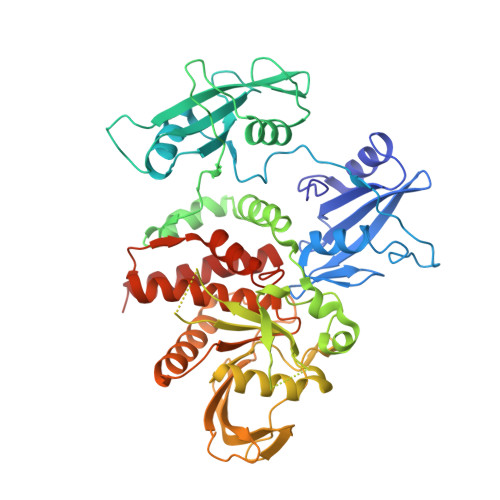Structural and Mechanistic Insights into LEOPARD Syndrome-Associated SHP2 Mutations.
Yu, Z.H., Xu, J., Walls, C.D., Chen, L., Zhang, S., Zhang, R., Wu, L., Wang, L., Liu, S., Zhang, Z.Y.(2013) J Biol Chem 288: 10472-10482
- PubMed: 23457302
- DOI: https://doi.org/10.1074/jbc.M113.450023
- Primary Citation of Related Structures:
4DGP, 4DGX - PubMed Abstract:
SHP2 is an allosteric phosphatase essential for growth factor-mediated Ras activation. Germ-line mutations in SHP2 cause clinically similar LEOPARD and Noonan syndromes, two of several autosomal-dominant conditions characterized by gain-of-function mutations in the Ras pathway. Interestingly, Noonan syndrome SHP2 mutants are constitutively active, whereas LEOPARD syndrome SHP2 mutants exhibit reduced phosphatase activity. How do catalytically impaired LEOPARD syndrome mutants engender gain-of-function phenotypes? Our study reveals that LEOPARD syndrome mutations weaken the intramolecular interaction between the N-SH2 and phosphatase domains, leading to a change in SHP2 molecular switching mechanism. Consequently, LEOPARD syndrome SHP2 mutants bind upstream activators preferentially and are hypersensitive to growth factor stimulation. They also stay longer with scaffolding adapters, thus prolonging substrate turnover, which compensates for the reduced phosphatase activity. The study provides a solid framework for understanding how individual SHP2 mutations cause diseases.
Organizational Affiliation:
Department of Biochemistry and Molecular Biology, Indiana University School of Medicine, Indianapolis, Indiana 46202, USA.














